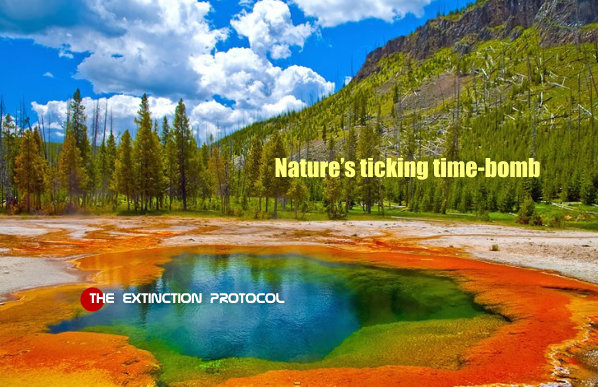Supervolcano: A chunk of Yellowstone the size of Chicago has been pulsing. Scientists want to know why…

In northwestern Wyoming, in the center of Yellowstone National Park, a bubbling caldera is the scar of a 640,000-year-old, gargantuan volcanic eruption. The 3,472-square-mile park encompassing the caldera is filled with geologic wonderlands of sprouting geysers and effervescing pools, all ultimately driven by magma and superheated fluids churning in the rock below the surface. One of these areas, Norris Geyser Basin to the northwest of the caldera, contains more than 500 hydrothermal features.
These tempestuous geysers and pools often change from day to day, but a much larger transformation has been taking place as well: For more than two decades, an area larger than Chicago centered near the basin has been inflating and deflating by several inches in erratic bursts. In a hyperactive volcanic region like Yellowstone, the exact causes of any specific movement are difficult to pin down. But a recent study in the Journal of Geophysical Research: Solid Earth may help explain why this pocket of land has been breathing in and out.
“In all likelihood, Norris has been a center of deformation for a very long time,” says Daniel Dzurisin, a research geologist at the U.S. Geological Survey’s Cascades Volcano Observatory and one of the co-authors of the new research. In the late 1990s, a body of magma intruded beneath Norris, and fluids trapped within the magma bubbled out and made their way through the rocky labyrinth above them. As the fluids got stuck and pressure built up, the ground would rise, and when the fluids were able to escape elsewhere, the ground deflated. Today, magma-derived fluids could sit close to the surface, just a mile or so below the ground.
To be clear, the new research does not indicate that the supervolcano that created Yellowstone’s caldera—which last erupted 640,000 years ago—is any more likely to erupt now. Instead, these geologic movements may help explain why the park’s Steamboat Geyser, the world’s tallest active geyser, has been erupting at a record-breaking pace since March 2018. Researchers also speculate that the changes below Norris may mean a slightly increased chance of hydrothermal explosions taking place in the basin.
The team suspects that magma-derived fluids are now sitting just beneath the surface of Norris Geyser Basin. Hydrothermal explosion craters dating back thousands of years can be found all over the region, caused by geologic pressure cookers of confined, scorching water that violently depressurize and flash-boil into steam if the rock cracks, an event that is all-but-impossible to forecast. –National Geographic

Comments
Post a Comment